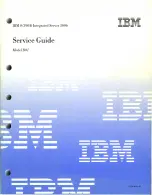
Secure Digital (SD) Card Protocol Description
4-4
SanDisk Secure Digital (SD) Card Product Manual, Rev. 1.9 © 2003 SANDISK CORPORATION
Start bit
always '0'
Block length
End bt:
always '1'
Standard busy
(only DAT0 used):
MSB (4095)
0 CRC 1
LSB (0)
Start bit
always '0'
Block length /4
End bt:
always '1'
MSN
LSN
DAT3
0 4095 3 CRC 1
DAT2
0 4094 2 CRC 1
DAT1
0 4093 1 CRC 1
DAT0
0 4092 0 CRC 1
Wide bus (all four
data lines used):
Figure 4-6. Data Packet Format
4.2. Protocol’s Functional Description
All communication between the host and SD Cards is controlled by the host (master). The host sends the following
two types of commands:
•
Broadcast Commands
—Broadcast commands are intended for all SD Cards. Some of these
commands require a response.
•
Addressed (Point-to-Point) Commands
—The addressed commands are sent to the addressed SD
Card and cause a response to be sent from this card.
A general overview of the command flow is shown in Figure 5-7 for the Card Identification Mode and in Figure 5-8
for the Data Transfer Mode. The commands are listed in the command tables (Tables 4-3 through 4-10). The
dependencies between the current SD Card state, received command and following state are listed in Table 4-11. In
the following sections, the different card operation modes will be described first. Thereafter, the restrictions for
controlling the clock signal are defined. All SD Card commands together with the corresponding responses, state
transitions, error conditions and timings are presented in the following sections.
















































